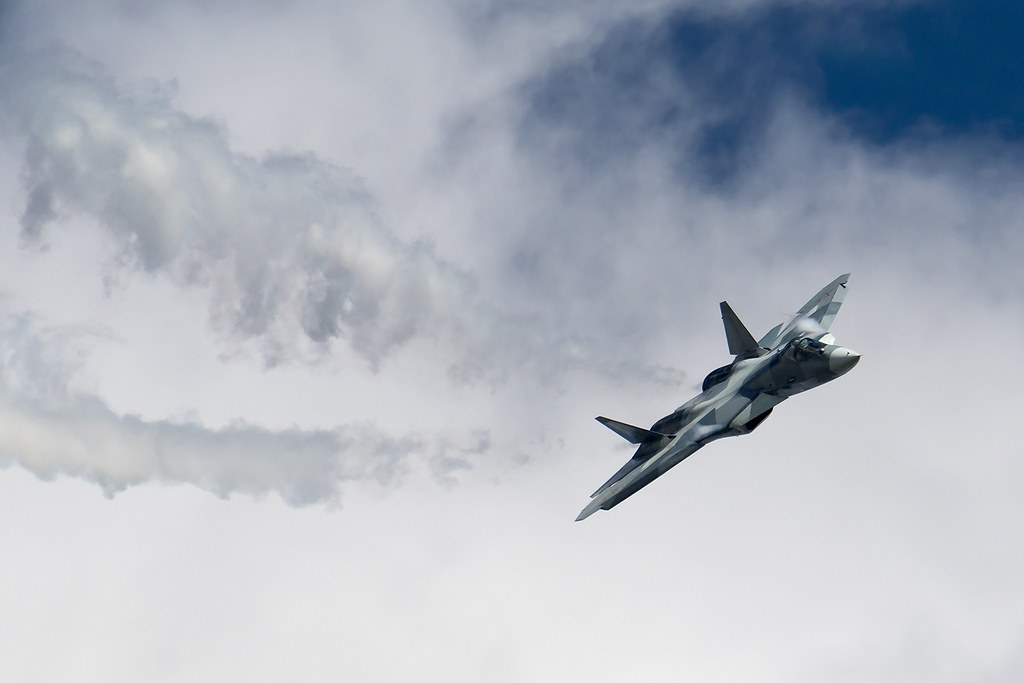
The enactment of the Countering America’s Adversaries Through Sanctions Act (CAATSA) by President Donald Trump in 2017 has posed obstacles for several nations interested in procuring either the Su-35 or Su-57, according to reports from various sources in Asia. Indonesia is among these nations facing challenges due to this legislation.
Under CAATSA, countries engaging in significant transactions with North Korea, Iran, or Russia, particularly involving military acquisitions, risk facing sanctions from the United States. This leaves Indonesia and other nations in a state of uncertainty regarding their plans to acquire the Su-35 or potentially the Su-57.
Despite the hurdles presented by CAATSA sanctions, which have hindered Indonesia’s efforts to acquire Russian fighter jets, there is still a possibility for alternatives. An interesting perspective presented in a video by Lycma Mil-Tech’s YouTube channel suggests that the CAATSA law may not be entirely foolproof. The video cites President Trump’s signing statement on CAATSA, where he expressed concerns about its constitutionality.
It’s important to note that the views expressed in the video are opinions, and a legal analysis is necessary to identify any potential loopholes in the law. Speculation in Indonesian media suggests the country may negotiate a new deal for the Su-35 fighter, potentially securing it by 2024.
However, the discussion extends beyond just the Su-35. According to several Indonesian sources, US media have speculated about Indonesia’s intentions to acquire either the Su-35 or its more advanced counterpart, the Su-57, provided they can navigate around the restrictions imposed by CAATSA sanctions.
The absence of these US CAATSA sanctions could have seen Indonesia’s Air Force strengthened by Russian Su-35s, as highlighted by ZonaJakarta. In March 2020, Bloomberg reported, citing an anonymous source from the Trump administration, that Washington had persuaded Jakarta to cancel the Su-35 acquisition, citing a violation of CAATSA. Subsequently, the Indonesian Ministry of Defense explained its decision to cancel the deal and opt for the US F-15 EX and the French Rafale.
The imperative to bolster the combat capabilities of the Indonesian Air Force was underscored by the Defense Minister. A press release from the Indonesian Ministry of Defense last year highlighted the pressing need for fleet reinforcement, particularly as aircraft like the F-5 Tiger jets near the end of their operational lifespan. However, plans to replace the F-5 Tiger with Sukhoi Su-35s were thwarted by the looming threat of CAATSA and OPAC sanctions imposed by the US.
In light of this, the Defense Ministry emphasized the necessity of acquiring new defense equipment, specifically fighter jets, to phase out aging aircraft. While an initial proposal mentioned the potential purchase of used Mirage 2000s from Qatar, this deal was officially terminated by Indonesia in early 2024. Nevertheless, the prospect of acquiring Su-35s or even Su-57s remains under consideration.
Military Watch Magazine [MWM] reported in July 2023 that Indonesia is exploring avenues to safely procure the Su-35. According to MWM, there are strong indications that Indonesia is seeking methods to acquire the Su-35 or potentially another advanced Russian fighter jet, contingent upon finding ways to navigate US sanctions and ensuring secure transactions with Russia. Furthermore, MWM explained that since mid-2022, the Indonesian government has implemented measures to safeguard its economy from potential Western economic reprisals, with the West’s sanctions against Russia often cited as a driving factor behind these initiatives.




